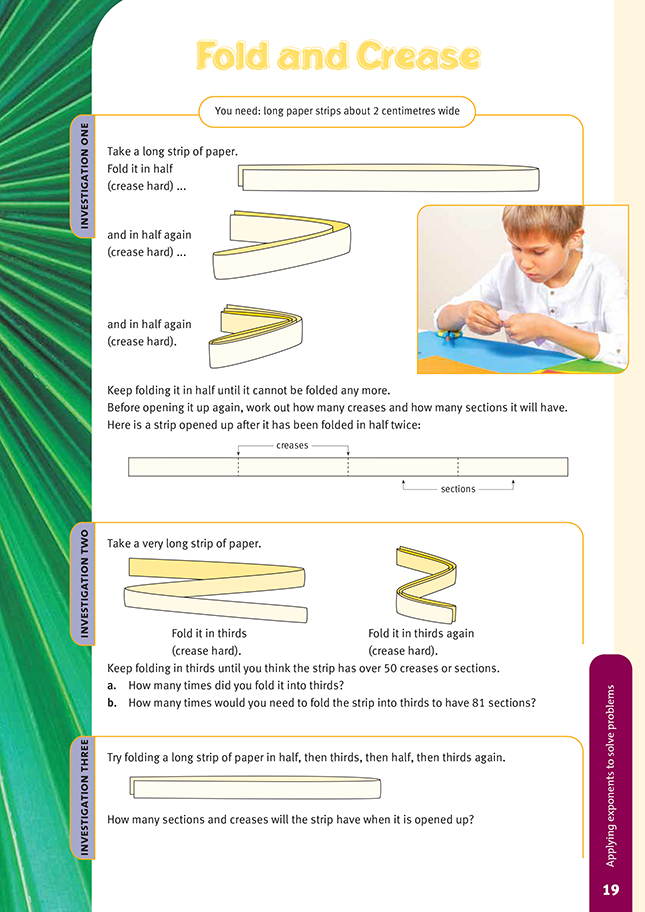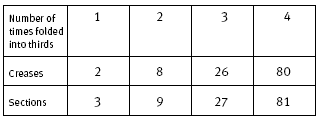This is a level 5 number link activity from the Figure It Out series. It relates to Stage 8 of the Number Framework.
A PDF of the student activity is included.
Click on the image to enlarge it. Click again to close. Download PDF (173 KB)
apply exponents to solve problems
Long strips about 2 centimetres wide
FIO, Link, Number, Book Four, Fold and Crease, page 19
Investigation One
This is a practical investigation using strips of paper. The students will find it easier to solve the problems by first working out some simpler problems and then setting up a table and analysing the relationship they see from that. Encourage the students to use powers when they are describing patterns.
For example, Investigation One can be summarised as:
The number of sections doubles progressively. Sections can be expressed as 2n where n = the number of previous sections. Likewise, the number of creases is 2n – 1. It will be physically impossible to fold the paper more than about six or seven times, so encourage the students to extend their tables into the hypothetical before they communicate their findings.
Investigation Two
This is a similar investigation, but this time it is based on sections following the pattern 3n, so a piece of paper folded in thirds three times will be 3 x 9 = 27 sections.
Investigation Three
This investigation gives the students a good opportunity to summarise expressions using powers to save space. You can use 2 x 3 x 2 x 3 = 22 x 32 to begin the process of gathering up terms to simplify expressions. The students should find it rewarding and challenging to discover and explain the relationships they have
found and to learn to express the patterns.
Answers to Activity
Investigation One
After a certain number of folds, the sections can be worked out by:
A strip can be folded, at the most, seven times.
The number of creases is always one fewer than the number of sections.
Investigation Two
a. Answers may vary. To get more than 50 creases or sections, you need at least four folds.
b. Four times. You can show this in a table:
The number of creases and sections are:
Investigation Three
The number of creases and sections are:
Note that the number of creases is always one fewer than the number of sections.




